Michael R. Weisser's Blog, page 76
November 7, 2016
The NRA Endorsed Trump But Are They Working For Him?
Ever since the NRA decided to endorse Trump back in April and pour an unprecedented amount of money into television advertising for his campaign, the question as to what effect this will have on the November 8th outcome is up for grabs. Because when it comes to embracing gun rights as a cornerstone of the GOP’s 2016 effort, there has never been another Presidential candidate who has paid so much attention to guns.
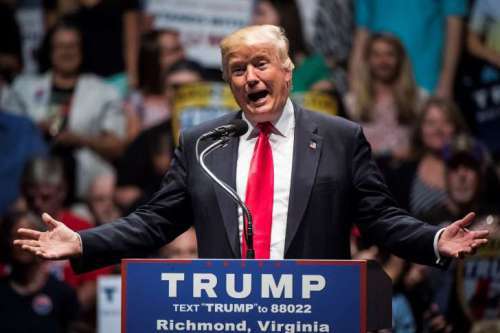 In 2008 McCain left the gun issue to his Daffy Duck running mate who more than once indicated that she didn’t know one end of a gun from another; in the 2012 election cycle Romney may have actually held a shotgun once or maybe not at all. But Trump injected the most extreme, pro-gun nonsense into his campaign from the very start, announcing his support for national concealed-carry back in June, 2015. And of course like most stupid and dangerous things he has said over the past several years, he has never explained what he meant when he assigned a ‘stop Hillary’ task to the supporters of 2nd-Amendment ‘rights.’
In 2008 McCain left the gun issue to his Daffy Duck running mate who more than once indicated that she didn’t know one end of a gun from another; in the 2012 election cycle Romney may have actually held a shotgun once or maybe not at all. But Trump injected the most extreme, pro-gun nonsense into his campaign from the very start, announcing his support for national concealed-carry back in June, 2015. And of course like most stupid and dangerous things he has said over the past several years, he has never explained what he meant when he assigned a ‘stop Hillary’ task to the supporters of 2nd-Amendment ‘rights.’
Last week I received an email from the NRA Political Victory Fund whose link took me to a website where I could sign up to get involved in the Trump campaign. My state listed two campaign coordinators, but that was no surprise, because I happen to live in a state – Massachusetts – which is not considered a ‘gun-rich’ state. But then I looked at the list of election coordinators in North Carolina, a swing state that is heavily into guns, and the NRA has a whole, big three coordinators listed for the Tarheel State and in Florida, the Gunshine State, the website listed – none! That’s right, a state that Trump must win on Tuesday doesn’t have a single person who, according to the NRA, is helping to get out the vote.
No maybe the NRA knows something I don’t; maybe their television ads are so powerful, so compelling, so dynamic that they don’t need to run a GOTV campaign at all. On the other hand, you can’t tell me that a 30-second television ad which will probably play while you’re taking a leak or grabbing a snack before the next episode of The Walking Dead or Scorpion has anywhere near the impact of a telephone conversation or a discussion with someone standing at your front door. I can understand why the NRA doesn’t have a campaign coordinator working in North Dakota. Hell, even the cows in North Dakota will vote for Trump and Pence. But Florida – nobody in Florida?
Meanwhile, want to knock on a few doors for Hillary? If you live in Miami, here are three locations within easy driving distance where you can go to get involved. If you’re a resident of Raleigh, NC, you can pick up your canvassing materials in Danville, Greenville or Rocky Mount. Let me tell you something about Rocky Mount. I guarantee there isn’t a single resident in that town who doesn’t own a gun and it’s Hillary, not Trump who’s got feet there on the ground.
I know three couples my age, which means we were liberals back in the 1960’s before there was anything as insulting and demeaning as Fox News, who will be spending the next several days canvassing in Nevada, New Hampshire and PA. None of them feel confident about Hillary’ slight lead, none of them feel that they can afford to stay home in the run-up to this election, none of them want to see an angry and vindictive Trump administration defining the politics of the next four years.
And I have to believe that if I know three couples like this, that there are many more folks who feel the same way. So if the NRA wants to believe that their bombast and anti-Hillary bullshit are uniting the faithful that’s fine, but what they may have done instead is awakened lots of folks to the dangers of Trump, which couldn’t be money better spent.


With Your Help A New Approach To Sustaining Animals Will Really Pay Off.
I was born and raised in Washington, D.C. and lived right down the street from the National Zoo. So the zoo was kind of my backyard, so to speak, and I spent afternoons there looking at the various inhabitants, including the original Smokey the Bear, the bald eagles and many other animal species as well. One of my favorites was a small group of North American bison who stood together seemingly without ever moving and attracted lots of flies. I knew that if I wanted to see a buffalo in the wild, I would have to journey out west to the Great Plains.
 Which, in fact, I did in 1968 when I watched the buffalo roundup in Wind Cave National Park. The park, along with Custer State Park, lies just to the east of South Dakota’s Black Hills and the herd, which numbered about one thousand head, was a tiny remnant of the enormous buffalo herd which had survived the depredations of commercial hunting before and after the Transcontinental Railroad was completed in 1869. Buffalo meat can now be found on restaurant menus here, there and all over and today’s herd probably numbers around 200,000, enough to insure the survival of this breed. But when Europeans first came to America, buffalo could be found all over the continent and probably wandered freely through the area that is now the National Zoo. By 1800, however, they had disappeared east of the Mississippi, having fallen prey not only to hunters, but to fences and land cleared and planted for farms.
Which, in fact, I did in 1968 when I watched the buffalo roundup in Wind Cave National Park. The park, along with Custer State Park, lies just to the east of South Dakota’s Black Hills and the herd, which numbered about one thousand head, was a tiny remnant of the enormous buffalo herd which had survived the depredations of commercial hunting before and after the Transcontinental Railroad was completed in 1869. Buffalo meat can now be found on restaurant menus here, there and all over and today’s herd probably numbers around 200,000, enough to insure the survival of this breed. But when Europeans first came to America, buffalo could be found all over the continent and probably wandered freely through the area that is now the National Zoo. By 1800, however, they had disappeared east of the Mississippi, having fallen prey not only to hunters, but to fences and land cleared and planted for farms.
The balance between human and natural habitats is precarious to say the least and always results in loss of the latter due to expansion of the former. Our original conservation movement was founded by Theodore Roosevelt and George Bird Grinnell, who witnessed first-hand the disappearance of species as American settlers penetrated the frontier and moved across the West. But regulating hunting seasons can only protect animals that are the targets of a hunt. What about all the other wild creatures whose habitats are threatened by the ever-increasing encroachments of Man?
A genuinely different and effective response to this problem has now exists with the work of an organization, Conservation Centers for Species Survival (C2S2), which unites the formidable talents and resources of such outstanding programs as the Smithsonian National Zoo, my old playground, the Fossil Rim Wildlife Center in Texas, Omaha’s Doorly Zoo and several other major wildlife centers, to take advantage of decades of wildlife management experience and develop programs in biodiversity, population optimization and habitat management that can both expand existing species populations, as well as threatened species both within their natural environment as well as in man-made habitats such as nature reserves and zoos.
What I find most intriguing about the C2S2 effort is its emphasis on collaborations, consortium-types of planning and, most of all, public-private partnerships. I like this last approach because when it comes to conservation over the years the public and private sectors have often been at odds. Conservationists are often seen as anti-progress, private development is viewed as having little concern for the natural environment if it gets in the way of economic growth. Does anyone need to be reminded of Sarah Palin leading the chant: Drill baby, drill?
The one question which remains to be answered is: why should we be concerned about the survival and sustenance of wild animals at all? I’ll tell you why. Because wild creatures teach us things about ourselves. We have figured out how to go to the Moon, but we still haven’t figured out how to stop killing each other over the most unintended, little slight. That makes us somehow a higher life form than a wild creature which never attacks its own species even in the search for food?
Take a look at the C2S2 website and remember that after tomorrow you’ll be done with Hillary’s campaign and you can donate some money to this wonderful group. It’s a good thing to do.


November 4, 2016
Does Gun Violence Affect Urban Economic Trends? The Urban Institute Says ‘Yes.’
Over the years, the Urban Institute has published some significant research on gun violence, I’m thinking, for example, of the study they published in 2014 which examined the medical costs of gun injuries. And now they have come out with a new report which attempts to analyze the cost of gun violence with reference to business and employment trends in three cities – Minneapolis, Oakland and Washington, D.C.
 Trying to figure out the effects of gun violence by counting the number of people killed or injured with guns is easy; understanding how gun violence affects neighborhood quality of life is a much more difficult task, primarily because socio-economic changes in any community are influenced by so many variables that it’s always risky to assign primary cause to one issue like gun violence or anything else. And the authors of this study are aware of this problem and also note the degree to which studies about the impact of gun violence on the quality of life in any community are few and far between.
Trying to figure out the effects of gun violence by counting the number of people killed or injured with guns is easy; understanding how gun violence affects neighborhood quality of life is a much more difficult task, primarily because socio-economic changes in any community are influenced by so many variables that it’s always risky to assign primary cause to one issue like gun violence or anything else. And the authors of this study are aware of this problem and also note the degree to which studies about the impact of gun violence on the quality of life in any community are few and far between.
Notwithstanding these caveats, however, this new study appears to validate the general idea that there is an inverse relationship between economic activity and gun activity; as the latter goes up, the former goes down, and vice-versa, at least in the three cities covered in this review. The authors are also aware of the limitations imposed on cause-and-effect arguments when measured through the use of regression analysis, but here again they try to be sensitive to these limitations both at the level of analysis as well as discussing the validity of their results.
I want to raise two issues with this report that in no way detract from its value or importance but nevertheless deserve to be discussed. First, beginning the data collection in 2009 and running it through 2012 creates a significant problem because these years, particularly 2009 and 2010, marked the worst economic trough experienced by the American economy in the previous fifty years. The fact that employment in all three cities began to expand in 2011 must reflect as much the beginnings of economic recovery from the Great Recession as from anything else. I would have felt somewhat more confident in tying economic trends to gun violence had the report compared employment, business openings and so forth to levels in these communities prior to 2007-2008, if only because such a comparison would have at least given some perspective on whether what happened after 2010 was a real shift in economic activity or just a return to economic levels experienced prior to 2008.
The second issue that I want to raise goes beyond this report itself to the whole question of how gun violence is measured and, for that matter, defined. The authors define gun violence only with reference to gun homicides which, they admit, is the least typical form of violence caused by guns. What would have made this report more conclusive would have been a comparison of economic trends to general violent crime trends, in particular, other violent but non-fatal crimes committed with guns.
In this regard, an analysis of economic trends might have been more nuanced had the authors looked at hiring and sales figures versus armed robbery, if only because so much of the economic activity in census tracts with high crime rates tends to be street-level, retail services and sales. These are not neighborhoods which support large numbers of skilled, white-collar jobs, and decisions to open small, retail or service establishments will bear much more heavily on quality-of-life considerations as they are experienced at the entrance to the store. In Minneapolis, for example, homicide rates remained fairly steady between 2010 and 2012, but robberies increased by 15%.
This is a good, serious and detailed report. Support for this effort came from Everytown, you know, the Bloomberg bunch that wants to take all the guns away. Do you believe that any small business owner who ever looked down the barrel of a gun would mind?


November 3, 2016
Ending Gun Violence Means Understanding Gun Violence And Here’s A Good Start.
So now we have the second report in as many weeks that strongly points to the connection between gun violence and gun laws; i.e., less of the latter produces more of the former. The first report came from the Center for American Progress (CAP) which found that states with fewer legal restrictions on guns have higher rates of gun violence; now we have another report issued by New York State’s Attorney General, Eric Schneiderman, which shows that states with lax gun regulations also export more crime guns to other states, hence raising gun violence rates in states which often have very strict and comprehensive controls.
 So the bottom line is that states that do not view guns as a threat to community safety not only make their own communities less safe but also help to make communities elsewhere dangerous as well. And if you believe that this is in any way a new discovery, let me take you back the passage of the Federal Firearms Act in 1938. The FFA38 was actually the second gun bill passed during the presidency of Franklin Roosevelt, the first being the 1934 law that regulated sale and ownership of full-automatic weapons and sawed-off shotguns whose use became the staple of Hollywood gangster movies then and now.
So the bottom line is that states that do not view guns as a threat to community safety not only make their own communities less safe but also help to make communities elsewhere dangerous as well. And if you believe that this is in any way a new discovery, let me take you back the passage of the Federal Firearms Act in 1938. The FFA38 was actually the second gun bill passed during the presidency of Franklin Roosevelt, the first being the 1934 law that regulated sale and ownership of full-automatic weapons and sawed-off shotguns whose use became the staple of Hollywood gangster movies then and now.
The 1938 law moved the Federal government into gun regulation big-time, because it focused not on the control of these somewhat exotic and relatively unusual (and relatively expensive) machine guns, but established the regulation of standard, run-of-the-mill handguns and long guns which could be found in probably a majority of American homes. Moreover, the basic components of the 1938 law, even though much of it was revised by the Gun Control Act of 1968, created the regulatory environment which exists to the present day. To wit:
After 1938, anyone who wanted to be in the business of selling firearms, as opposed to simply collecting and transferring personal guns, had to acquire and operate the business with a federal firearms license issued by the Treasury Department. Why the Treasury Department? Because the license cost one buck, and anyone who paid anything to the U.S. Government paid to the U.S. Treasury. The law also made it illegal if a felon, fugitive, or anyone ‘convicted of a crime of violence’ received a gun and, most important, required that federally-licensed gun dealers only transfer guns to individuals who were residents of the same state in which the dealer sold guns. The law was later revised to exempt long guns from the in-state purchase requirement (hence Lee Harvey Oswald was able to purchase and directly receive a rifle from a sporting-goods dealer in Chicago) but the requirement that handgun sales be limited to in-state transfers remained law from then until now.
Why has the government always required that handgun ownership be more rigorously regulated than long guns? Because the basic purpose of federal gun regulations is to “provide support to Federal, State and local law enforcement officials in their fight against crime and violence.” So says the Gun Control Act of 1968, a law which, incidentally, was supported by the NRA.
Note that neither the 1938 gun law nor the law passed thirty years later or, for that matter, the third big law passed in 1994 attempted to regulate guns per se; all three laws were attempts to break the connection between guns, crime and violence by defining which individuals could acquire guns. But none of these laws defined gun violence for what it really is.
Gun violence is a pathogen and most pathogens spread through human contact, which is certainly the case with the pathogen caused by guns. We still don’t know exactly how, when or why this human contact takes place, but the reports issued by CAP and New York’s AG provide a good start. They also provide valid methodological templates to be used for further research. In sum, these reports deserve to be read, discussed and their value applauded and understood.


November 1, 2016
Will Gun Owners Start A Rebellion To Defend Their 2nd-Amendment Rights? Don’t Hold Your Breath.
Notwithstanding Donald Trump’s jeremiad against the ‘corrupt media,’ I still believe The New York Times adheres to its masthead slogan “All the News That’s Fit to Print.” But perhaps the paper slipped in a story last week about Trump supporters calling for a revolution if Hillary wins. The most aggressive statements about a looming Trumpian apocalypse came from several people who identified themselves as gun owners and predicted armed insurrection if Hillary won the election and then attempted to take away their guns.
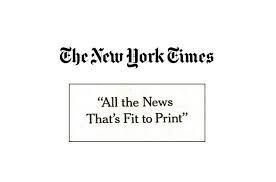 You would think that two experienced reporters, when confronted with serious threats of armed revolt, (which happens to be a Federal felony) would at least attempt to figure out whether there was even remotely connected to reality before telling their readers that such views represented a ‘dark fear’ about the country heading for a violent political end. But these predictions about armed rebellion were presented without even the slightest effort to determine whether there was anything lurking behind such comments that could possibly translate into an insurrectionary event.
You would think that two experienced reporters, when confronted with serious threats of armed revolt, (which happens to be a Federal felony) would at least attempt to figure out whether there was even remotely connected to reality before telling their readers that such views represented a ‘dark fear’ about the country heading for a violent political end. But these predictions about armed rebellion were presented without even the slightest effort to determine whether there was anything lurking behind such comments that could possibly translate into an insurrectionary event.
I have sold guns to more than 9,000 gun owners and can count on the fingers of one hand the few who will pull a Clinton-Kaine lever on November 8th. Know why gun owners are going to vote for Trump? Not because he’s telling them to ‘take care of Hillary’ if she messes with their 2nd-Amendment rights, not because their guns will protect them from the corruption of the elite, and certainly not because he says we will be a safer country if everyone walks around with a gun. Gun owners are going to vote for Trump for one simple reason: they have always voted for the Republican candidate, no matter what he says. And if they are then asked why they are voting for that candidate, they’ll repeat whatever the candidate said about why they should vote for him.
Want to take a guess as to how many gun owners came into my gun shop during the 2012 election and told me they were voting for Romney because he was on the side of the ‘givers’ and Obama was on the side of the ‘takers?’ Just about every single one. And the few who didn’t tell me that the country had too many ‘takers’ didn’t say they wanted to make America ‘great’ again, they said they ‘believed’ in America, which just happened to be the Romney campaign slogan since everyone knew that someone born in Kenya couldn’t possibly believe in the U.S.A.
Last week Wayne-o sent an ‘urgent message’ to the NRA membership, warning them of Hillary’s plan to ‘forcibly’ take away their guns which could only be prevented if everyone joined with him, ‘arm in arm, shoulder to shoulder,’ to fight and ‘make America great again.’
Wayne’s exhortation to man the barricades was immediately dismissed by mainstream journalists as an example of an ‘alternate universe,’ but what gun owners hear and then repeat to inquiring reporters is one thing; whether they are willing to put up anything beyond their mouths is something else again. In 2013 a radio shock-jock radio named Adam Kokesh announced that he and a hardy band of supporters were determined to march from Virginia into Washington, D.C. They would carry loaded guns into the Nation’s Capital to initiate what he called the ‘Final American Revolution’ that would dissolve the Federal government and, I guess, install him as King. The revolution, of course, was cancelled when Kokesh realized that all he’d get for his trouble was a quick trip from the bridge in Virginia to a jail in D.C.
Being a law-abiding citizen happens to be a requirement for the legal ownership of a gun. And NRA members and gun owners in general tend to be a very law-abiding bunch. The good news is that predicting that someone else will engage in armed rebellion happens to be protected by the same Bill of Rights which protects their ownership of guns. And they’re not about to do anything that might really cause them to lose those guns.


October 31, 2016
Know Who You Are Protecting If You Walk Around With A Gun? Nobody.
If there’s one favorite Gun-nut Nation idea that I can’t stand, it’s the notion that we should all be out there protecting ourselves and everyone else by walking around with a gun. And a certain mystique has now developed about what is sometimes referred to as ‘citizen protectors,’ and while the concept has a certain cultish element involved in its spread, the truth is that it’s just a scam marketing strategy developed by the gun industry and promoted by scam media influencers to sell more guns. And the reason I call all this self-protection with guns a scam is very simple; not a single one of the outfits which promote the idea of everyone becoming a ‘citizen-protector’ has ever backed the idea that carrying a concealed weapon should first require a proficiency test of any kind.
 Of course all these newly-anointed defensive gun-use instructors will tell you that it’s important to train, train and train. And they all back up this message about the importance of training with live training courses, online courses, CD-ROM courses, you name it and there’s a training product out there for you to buy.
Of course all these newly-anointed defensive gun-use instructors will tell you that it’s important to train, train and train. And they all back up this message about the importance of training with live training courses, online courses, CD-ROM courses, you name it and there’s a training product out there for you to buy.
Now don’t get me wrong. I’m not saying that people who walk around with a legal gun in their pocket represent a threat to themselves or to someone else. Gun owners in general tend to be very law-abiding; gun owners who apply for a carry-concealed license (CCW) even more so. What I am saying is that letting gun owners walk around thinking that they can protect anyone without first proving a high level of proficiency and then renewing that proof on a regular basis is nothing more than a fraudulent appeal to the most ignorant emotions that humans possess. And when I say ‘proving’ proficiency, I’m not talking about letting someone stand in front of stationery, paper target and drill a few holes. I was doing that at a Coney Island shooting gallery when I was twelve years old.
I currently teach the handgun safety course in my state that is required in order to apply for a license to own a gun. The license without any additional coursework of any kind also allows concealed-carry of a gun. So you can get a license, buy a Glock and stick it in your pocket without actually having fired your pistol, not even once. And a most states grant CCW without a proficiency test of any kind.
I have a small range in my gun shop and even though the course does not mandate live fire, I make all the students shoot a pistol so that at least they will better understand the safety issues involved in handling a gun. First every student fires a magazine of 22-caliber ammo with a Ruger SR-22. Then they move to the other lane and shoot two rounds with a 9mm Glock. They shoot the Glock on command and have two seconds to put at least one of the two shots within a 9-inch circle on a torso target fifteen feet away. If they get one of two rounds into the circle within two seconds they pass; otherwise they fail. They still get their course certificates even if they fail this drill because, remember, my state grants CCW without proficiency certification of any kind.
Of the 131 students who have done this drill so far, 4 have passed. That’s right, three percent of the folks who will be able to carry a gun around to protect themselves and others have demonstrated the most minimal ability to use a gun in self-defense. And the target that most of them missed completely was standing still.
So the next time that someone tells you that concealed-carry is a good thing, ask them how come the NRA and everyone else in Gun-nut Nation is opposed to these citizen-protectors having to prove their competency with a gun. Oh, I forgot. Allowing the government to decide anything about how I use my guns is a violation of my 2nd-Amendment rights.


October 29, 2016
Sorry, But None Of The Arguments About Why We Need Guns Work For Me.
One of the true champions in the gun violence prevention (GVP) community is my friend Donna-Dees Thomases, whose Million Moms March in Washington on Mother’s Day, 2000, was a signal event in the growth and significance of GVP. Donna wrote a book about her experience which is certainly worth a read, and she remains a committed and energetic persona (God – where does she get that energy?) to this day. She and I were recently going back and forth because I was telling her that I was unlikely to show up at a public event where I had been asked to debate someone from the ‘other side.’ And she quickly replied, and then gave me permission to quote: “I refuse to debate the other side.”
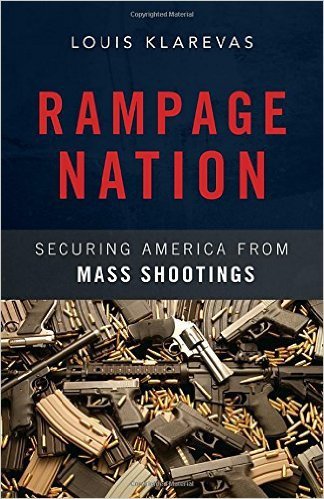 And the more I think about her comment, the better I feel about not getting involved in a ‘guns are good, guns are bad’ discussion with anyone from Gun-nut Nation, because the moment that you let someone tell an audience why they believe that everyone should carry a gun, or why the 2nd Amendment is a fundamental civil right, or why gun ownership is part and parcel of the American dream, you are basically admitting that such arguments deserve to be heard.
And the more I think about her comment, the better I feel about not getting involved in a ‘guns are good, guns are bad’ discussion with anyone from Gun-nut Nation, because the moment that you let someone tell an audience why they believe that everyone should carry a gun, or why the 2nd Amendment is a fundamental civil right, or why gun ownership is part and parcel of the American dream, you are basically admitting that such arguments deserve to be heard.
Many years ago I had the opportunity to attend a seminar taught by the brilliant economist Paul Baran, shortly before his death in 1964. He told us about a time in Germany in 1934 when he refused to debate a student who would later become a high-level functionary for the SS. The way Baran put it, “a meaningful discussion of human affairs can only be conducted with humans; one wastes one’s time talking to beasts about matters related to people.” Which is how I feel when Gun-nut Nation trots out one of it noted authorities to argue in favor of gun violence because guns are what protect us and keep us free.
The reason that such arguments in fact promote gun violence is because guns were designed and manufactured to be instruments of violence, no matter how justified you want that violence to be. And the fact that our society has decided that these weapons of war can be kept in every household, whether or not any member of that household is being called up to fight in a war doesn’t change the essential nature of these weapons at all. Sure, guns can be used for hunting, sport or just for plain old fun. That’s why I keep 50 or 60 of them around and fool around with a couple of them every day. But investing gun ownership in some of cultural charisma based on a pack of lies about how we need them for self-defense is to allow a discussion about human affairs to be shared with beasts. Sorry, it doesn’t work for me.
If you think I’m being harsh and unyielding in my comments about people who promote gun violence, you might want to read a new book, Rampage Nation, whose author, Louis Klarevas, spent a year collecting and studying data about mass shootings that have occurred in the United States over the past 50 years. I have some quibbles with Professor Klarevas about some of the methodology he employs as well as his views on what he believes might reduce gun violence, particularly mass shooting violence, in the years ahead. But notwithstanding my slight hesitations about accepting everything he says, the bottom line is that when you finish reading this book, the most sacred arguments used by Gun -nut Nation to promote gun violence vanish into thin air.
Gun-free zones do not attract shooters. Gun-toting civilians do not prevent crime. The data is solid, the analysis is convincing, the only problem is that this book won’t change the minds of Gun-nut Nation advocates, because to quote Paul Baran, such people aren’t interested in human affairs. But the good news is that people like Donna Dees-Thomases will use what Louis Klarevas says to recruit more people to GVP. And that’s a good thing, it really is.


October 28, 2016
Mike The Gun Guy’s Greatest Hits: Five Must-Read Articles On Gun Violence
From time to time I think it’s important to alert Gun-sense Nation to publications that confirm one way or another what we all know, namely, that guns are responsible for the deaths and injuries of more than 100,000 Americans every year. And while most of us consider gun violence to be both abhorrent and inexcusable, from time to time we encounter folks who don’t share that point of view. And I’m not talking about card-carrying members of Gun-nut Nation who are today celebrating a jury’s decision to acquit the jerks who spent a week last year eating pizza up at the Malheur National Forest Range – I’m talking about a friend, a neighbor or a co-worker- someone who might profit from a serious discussion about gun violence prevention backed up with reference to research whose findings are incontestably true. So what follows is Mike the Gun Guy’s ‘greatest hits,’ i.e., what I think are recent studies on different aspects of gun violence that can and should be used to bolster the gun violence prevention point of view. Because let’s not forget that Gun-nut Nation relies on a powerful network of pro-gun promoters who never miss an opportunity to broadcast the idea that guns in the home, on campus, in front of polling places and God knows everywhere else are the only things we can rely on to keep us protected and safe. Think I’m indulging in a bit of hyperbole? Take a listen to Wayne-o’s latest rant. Want to have information at your fingertips that can be used to deliver a more reasonable (and rational) point of view? Here’s the list and you can download them all right here:
So what follows is Mike the Gun Guy’s ‘greatest hits,’ i.e., what I think are recent studies on different aspects of gun violence that can and should be used to bolster the gun violence prevention point of view. Because let’s not forget that Gun-nut Nation relies on a powerful network of pro-gun promoters who never miss an opportunity to broadcast the idea that guns in the home, on campus, in front of polling places and God knows everywhere else are the only things we can rely on to keep us protected and safe. Think I’m indulging in a bit of hyperbole? Take a listen to Wayne-o’s latest rant. Want to have information at your fingertips that can be used to deliver a more reasonable (and rational) point of view? Here’s the list and you can download them all right here:
—– Center for American Progress, America Under Fire. This study matches gun violence data with the degree to which each state experiences gun violence and demonstrates that as gun regulations increase, gun violence goes down. Gee, what a surprise. But what got this report on my ‘greatest hits’ list was a new approach to the definition of gun violence which aggregates ten different categories of gun violence so that different patterns can be seen in different states. DOWNLOAD
—– Azrael and Miller, “Reducing Suicide Without Affecting Underlying Mental Health.” An authoritative study on the links between suicide and access to lethal means which shows that restricting access to firearms can reduce suicide rates in countries which have free access to guns (read: the USA.) DOWNLOAD
—— Webster, et. al., “Firearms on College Campuses.” This recent study is actually more than what the title suggests, because the authors go after bigger game, namely, the whole question of gun-free zones. And what they argue and prove is that gun-free zones do not attract shooters, nor are gun-carrying civilians a deterrent to gun-violence events. DOWNLOAD
—— Hemenway and Solnick, “The epidemiology of self-defense gun use.” The notion that guns protect us from crime is a centerpiece of Gun-nut Nation’s continuing effort to make Americans believe that it should be normal, natural and indispensable for everyone to walk around with a gun. This article demolishes that argument – period. DOWNLOAD
—— Lester Adelson, “The gun and the sanctity of human life.” Why would I include an article published in 1980 in a list of recently-published works on gun violence? Because this is the best, most prescient and profoundly scholarly article ever published on gun violence and if you don’t read it, sorry, but your understanding of gun violence is sadly incomplete. DOWNLOAD
One caveat about my list. There are many other articles and contributions which I could mention so if you happen to be a gun-violence researcher please don’t feel offended if your article doesn’t appear here. We all need to educate ourselves on a continuing basis, and I am always willing to alert my readers to any and all research which deserves to see the brightest light of day. And while you are reading any or all of these articles, don’t forget something you must do on or before November 8th.


October 27, 2016
How Many Victims Of Gun Violence? A Lot More Than You Think.
Now that we are getting down to crunch time, stories are beginning to appear about how HRC is beginning to look beyond the election and starting to plan how things will work once she gets down to work. So without giving November 8th the evil eye, maybe it’s time for Gun-sense Nation to start thinking along the same lines. Because if she wins, and if the Senate turns blue, and if enough red seats in the House turn various shades of purple, a real, honest-to-goodness gun bill will wind up on her desk.
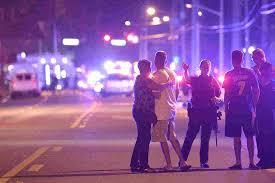 But in order to craft a good bill, the first thing we need to do is define the problem. And the problem is very simple: too many people get injured with guns. More than 30,000 of these injuries each year are fatal, another 75,000 or so result in serious wounds. Most of the injuries are intentional, some are accidents, but according to the CDC, the exact figure in 2014 was 114,633.
But in order to craft a good bill, the first thing we need to do is define the problem. And the problem is very simple: too many people get injured with guns. More than 30,000 of these injuries each year are fatal, another 75,000 or so result in serious wounds. Most of the injuries are intentional, some are accidents, but according to the CDC, the exact figure in 2014 was 114,633.
So if Gun-sense Nation wants to get behind a strategy that will, it is hoped, reduce gun violence, then we need to start with this benchmark figure in order to evaluate whether a new set of regulations will have much effect. But using a figure like 115,000 gun injuries a year is actually a number that is much lower than the actual injuries caused by guns. Which doesn’t have to do with the way we count injuries; rather, it reflects the way we define injuries, regardless of whether they are caused by guns or anything else.
When we talk about gun violence, what we really are talking about is violence of a particular type, namely, violence caused by a gun. But what is violence in and of itself? I think the best, most comprehensive definition is given by the World Health Organization (WHO), which says that violence is: “The intentional use of physical force or power, threatened or actual, against oneself, another person, or against a group or community, that either results in or has a high likelihood of resulting in injury, death, psychological harm, maldevelopment or deprivation.” Note that violence, according to the WHO, goes far beyond the physical injuries sustained when someone is shot with a gun. Because every time that someone is hit by a bullet, someone else sees them lying, bleeding in the street or within their home, someone sticks the victim in a car and drives like crazy towards the ER, and someone is standing there as the trauma surgeon comes out shaking his head.
Would it be wrong to assume that for every one of the 115,000 people who are physically injured with a gun each year that another several hundred thousand are psychologically traumatized and emotionally damaged even though the bullet entered the body of someone else? And if you think that the psychological impact of seeing one person bleeding to death is horrendous, imagine if you end up witnessing a mass shooting, such as at Aurora, Virginia Tech or Sandy Hook. In 1991, George Hennard drove his truck into a Luby’s Cafeteria in Killeen, Texas, shot and killed 23 people, wounded another 27 and then shot himself to death. In the aftermath, a health team interviewed 136 people who were on the scene during the shooting or arrived after it began. Nearly one-third of them had to be treated for Post-Traumatic Stress Disorder (PTSD.) I thought that PTSD was a hazard of military deployment, not something that might break out in a cozy little town like Killeen.
So the bottom line is that we are making a mistake if our benchmark for evaluating how new gun regulations might reduce gun violence is determined by counting only the number of people who get shot. The truth is we don’t have any way of counting the number of people who witness gun violence and suffer extreme emotional pain. And they often bear scars that are just as deep as any physical wound made by a gun.


October 25, 2016
It’s Not Just Keeping Guns Out Of The Wrong Hands, It’s Keeping The Wrong Guns Out Of Everyone’s Hands.
My first introduction to the gun business was 1965 in North Carolina working for my Uncle Ben. Like all my immigrant relatives, Ben had been in the iron-mongering business back in the Old Country, so when he came to America he opened a junk yard where he traded scrap metal this for scrap metal that. At some point he started manufacturing a small, 22-caliber revolver which he sold to pawn shops for $15 bucks; the pawnbrokers then resold this little piece of junk for $24.95. This gun was a quintessential ‘Saturday Night Special,’ which might fire one or two shots before it broke.
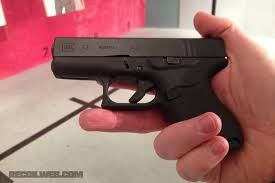
Glock 43
So here we are, fifty years later, and Uncle Ben’s cheap, little piece of junk for $24.95 has been replaced by, among other models, the Glock 43, which retails for somewhere around five hundred bucks. But the Glock 43, which is actually smaller and more concealable than Uncle Ben’s crummy, little gun, isn’t a 22-caliber revolver with a capacity of six shots. It’s an extremely-lethal 9mm pistol which holds seven rounds and with a magazine extension the capacity goes up to nine. If you’re not enamored with Glock, other gun companies like Ruger and Kahr make 9mm pistols which are basically the same capacity and size.
What has happened to the gun business over the last half century is the guns have gotten smaller, lighter, more concealable and much more lethal. When Franklin Zimring did a study of the calibers found in 1,115 gun attacks in Chicago in 1970, he found that gun attacks with 38-caliber weapons were more than twice as fatal as attacks committed with 22-caliber guns. When the California Department of Justice published a list of calibers that caused gun injuries in 2009, five times as many guns were used in high-powered calibers like 9mm, 40 S&W and 45 acp than guns chambered for the 22. You simply can’t compare the damage to human tissue caused by a 9mm round as opposed to a 22-caliber shell. The latter can be lethal if, and only if the shooter is either extremely lucky or is a very good shot. As for a 9mm or a 40 round, if it hits you anywhere except in your earlobe, you’re going down.
Back in 1968 and again 1994, we passed gun-control laws based on the idea that we could reduce gun violence by keeping guns out of the ‘wrong’ hands. Which meant keeping guns away from people whose background and behavior indicated that they might represent a threat to public safety or themselves if they could get their hands on a gun. The current effort to extend background checks to secondary sales is an effort to strengthen our ability to identify more ‘wrong’ hands, as are the strategies designed to tighten the regulatory environment in which gun dealers operate so as to keep ‘bad apple’ dealers from selling guns to people with ‘wrong hands.’
I happen to believe that this approach, while necessary, actually doesn’t respond to the primary cause of gun violence, namely, the degree to which most guns sold today are capable of being used to commit a much higher level of gun violence than ever before. There is a bill before Congress that recognizes the lethality of assault rifles and is an effort to revive the assault-weapons ban that expired in 2004. But while this law reflects concerns about the lethality of the AR-style gun, pro-gun advocates are not wrong when they say that, mass shootings notwithstanding, injuries caused by AR-15’s are relatively few and far between.
Know what causes most of the 115,000+ fatal and non-fatal gun injuries each year? It’s those small but powerful handguns which are increasingly the weapons of choice for most Americans who own guns. So instead of spending all our time, energy and money trying to keep guns out of the wrong hands, shouldn’t we also be trying to figure out how to keep the wrong guns out of everyone’s hands?





